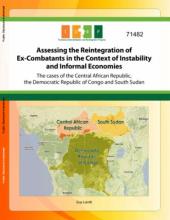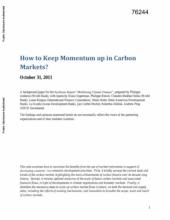Land Library
Welcome to the Land Portal Library. Explore our vast collection of open-access resources (over 74,000) including reports, journal articles, research papers, peer-reviewed publications, legal documents, videos and much more.
/ library resources
Showing items 1 through 9 of 12.Moldova has suffered over the last two decades from rising poverty, territorial secession, armed conflict, and the spillover effects of a regional financial crisis, with declining population size and life expectancy, and an economy approximately one-half of what it was in 1990.
Carbon finance recognizes the contribution of projects to mitigating climate change.
Tanzania's land, local government and forest laws mean that rural communities have well defined rights to own, manage and benefit from forest and woodland resources within their local areas through the establishment of village forests.
The implementation of effective Disarmament, Demobilisation and Reintegration (DDR) programmes in countries emerging from violent conflict are essential for building and maintaining peace and security.
This paper provides new evidence on the caste-related land productivity differential and its explanations in rural Nepal using household plot panel data.
Reforestation measures for degraded lands, strategies for the sustainable management of forest resources, and agroforestry practices that incorporate trees into farming systems are increasingly demonstrating their promise for producing commercialized tree products.
This note examines how to maximize the benefits from the use of market instruments in support of developing countries' low-emission development priorities.
The purpose of this paper is to summarize the challenges and the practical successes that a selected number of countries are experiencing in moving towards 'climate-smart' agriculture while also meeting the food requirements of a growing population, broader economic development and green growth o
This technical note on access to finance addresses six questions: 1) what is the access to and use of financial services in the Philippines, how does it vary, and how does it compare to other countries? 2) What financial services are available to different market segments?









